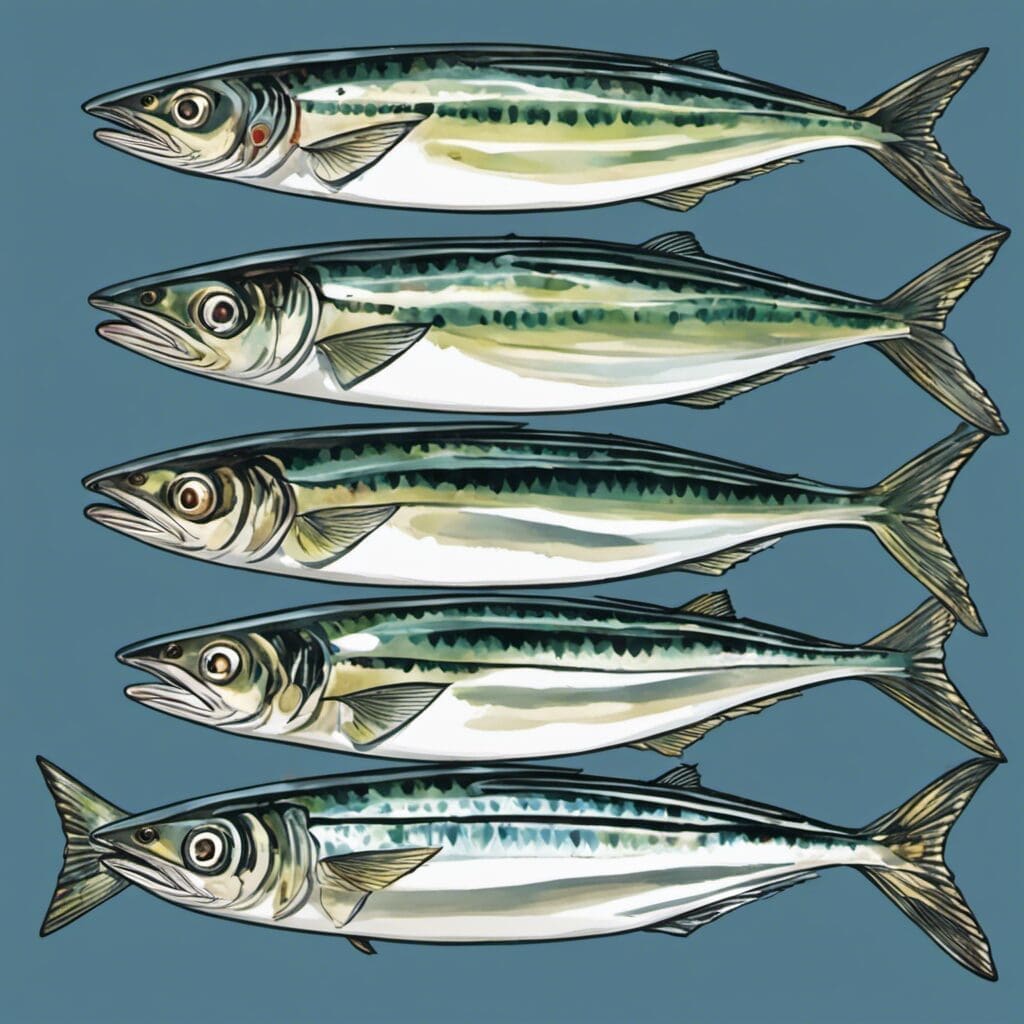Introduction
The Atlantic Mackerel (Scomber scombrus) is a common pelagic fish species belonging to the Scombridae family, which includes other popular varieties such as tuna and bonito. This species has a slim and streamlined body, ideal for fast swimming.
Conservation Status
Presently, the Atlantic Mackerel is listed as Least Concern (LC) on the International Union for Conservation of Nature (IUCN) Red List. This reprieve is due to the considerable population and wide distribution range of the species. However, there’s ongoing monitoring due to the significant pressure from commercial fishing.
Statistics
| Length | Weight | Average Lifespan |
|---|---|---|
| Average: 30 cm, Range: 20 – 60 cm | Average: 0.5 kg, Range: 0.2 – 1.8 kg | 20 years |
Distribution
Atlantic Mackerel is commonly found in both the eastern and western Atlantic Ocean, in regions extending from Norway to Morocco in the east and from Labrador to North Carolina in the west. They are great migrators and typically embark on long seasonal journeys.
Habits
Atlantic Mackerel favor saltwater habitats and they primarily dwell in shallow waters at a depth range of 10 to 200 meters. They are not particularly temperature-sensitive and can be found in waters ranging from -1.5 to 27°C.
When and Where to See
Atlantic Mackerels surface during their spring and fall migration, making May through June and September through October the best times to spot them. They are mainly nocturnal feeders and can often be seen during early mornings or late evenings.
Best Fishing Locations
Based on abundance and accessibility, here are the top ten locations to fish for Atlantic Mackerel:
- Norwegian Sea, Norway
- The Celtic Sea, United Kingdom
- Bay of Biscay, France
- North Sea, Denmark
- Baie de Granville, France
- Atlantic Large Marine Ecosystem, Iceland
- Gulf of Maine, United States
- Georges Bank, United States
- Southern Grand Banks, Canada
- Northwest Atlantic, Canada
How to Catch
The most effective lures for Atlantic Mackerel are shiny mackerel spoons or feathered jigs. They’re receptive to both trolling and spinning techniques. Peak fishing times are early morning and late evening during their migration periods.
Identification Guide
Atlantic Mackerel are easily identifiable by their slim, torpedo-shaped bodies with greenish-blue backs fading to a silvery white belly. They have distinct wave-like black bands located laterally.
Culinary Profile
Atlantic Mackerel is a top choice for grilling and smoking due its robust flavor and high oil content. It’s highly valued for its rich nutrients, particularly Omega-3 fatty acids. Popular mackerel recipes include grilled mackerel with lemon and parsley, smoked mackerel pate, and mackerel sushi.
Additional Information
Feeding mainly on small fish and squid, Atlantic Mackerel are known for their schooling behavior. Their primary predators are larger pelagic species such as tuna and marlin, as well as sharks. Sea birds and marine mammals also prey on them.
References and Further Reading
- FishBase – Atlantic Mackerel
- IUCN Red List – Atlantic Mackerel
- NOAA Fisheries – Atlantic Mackerel

